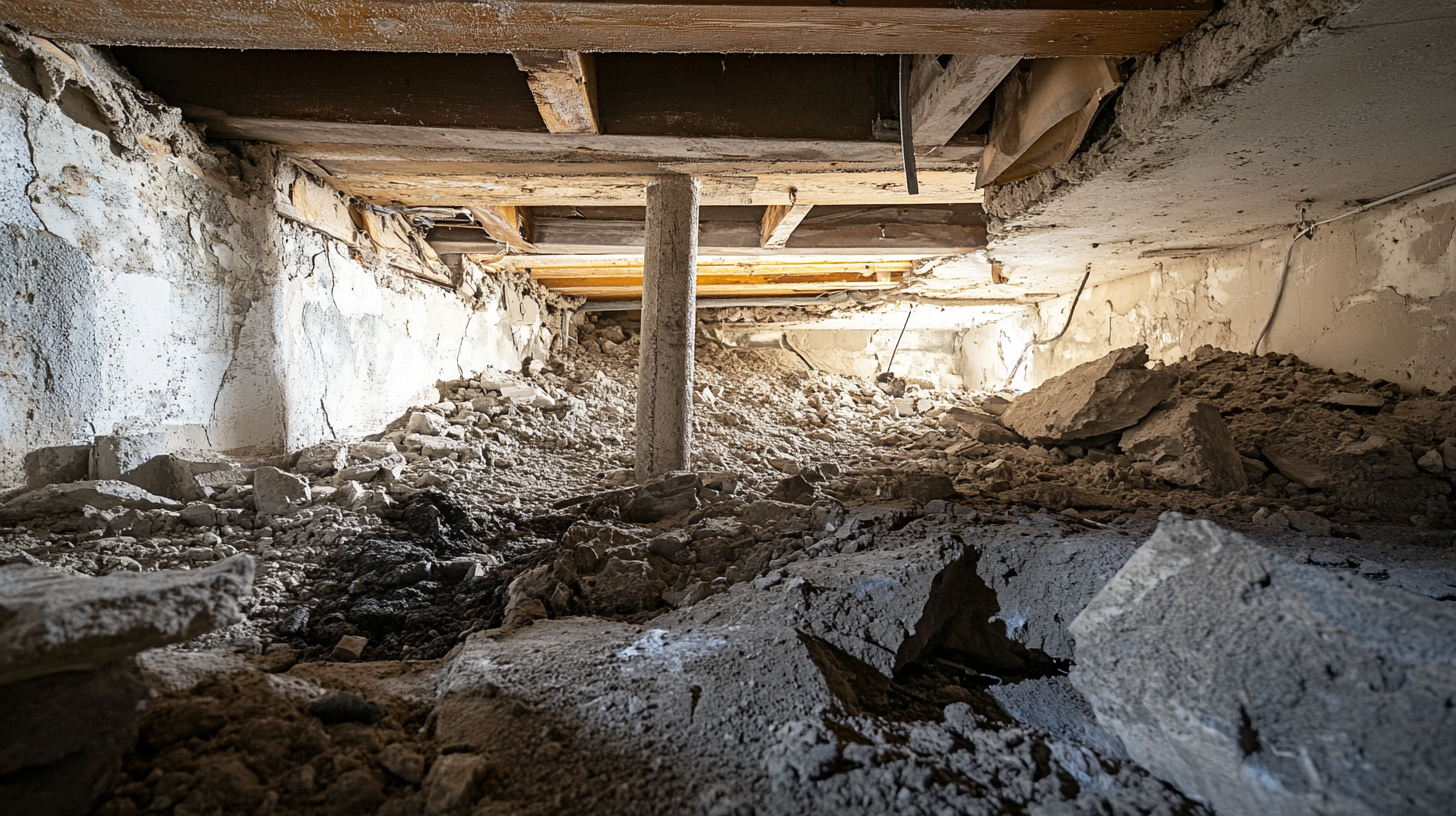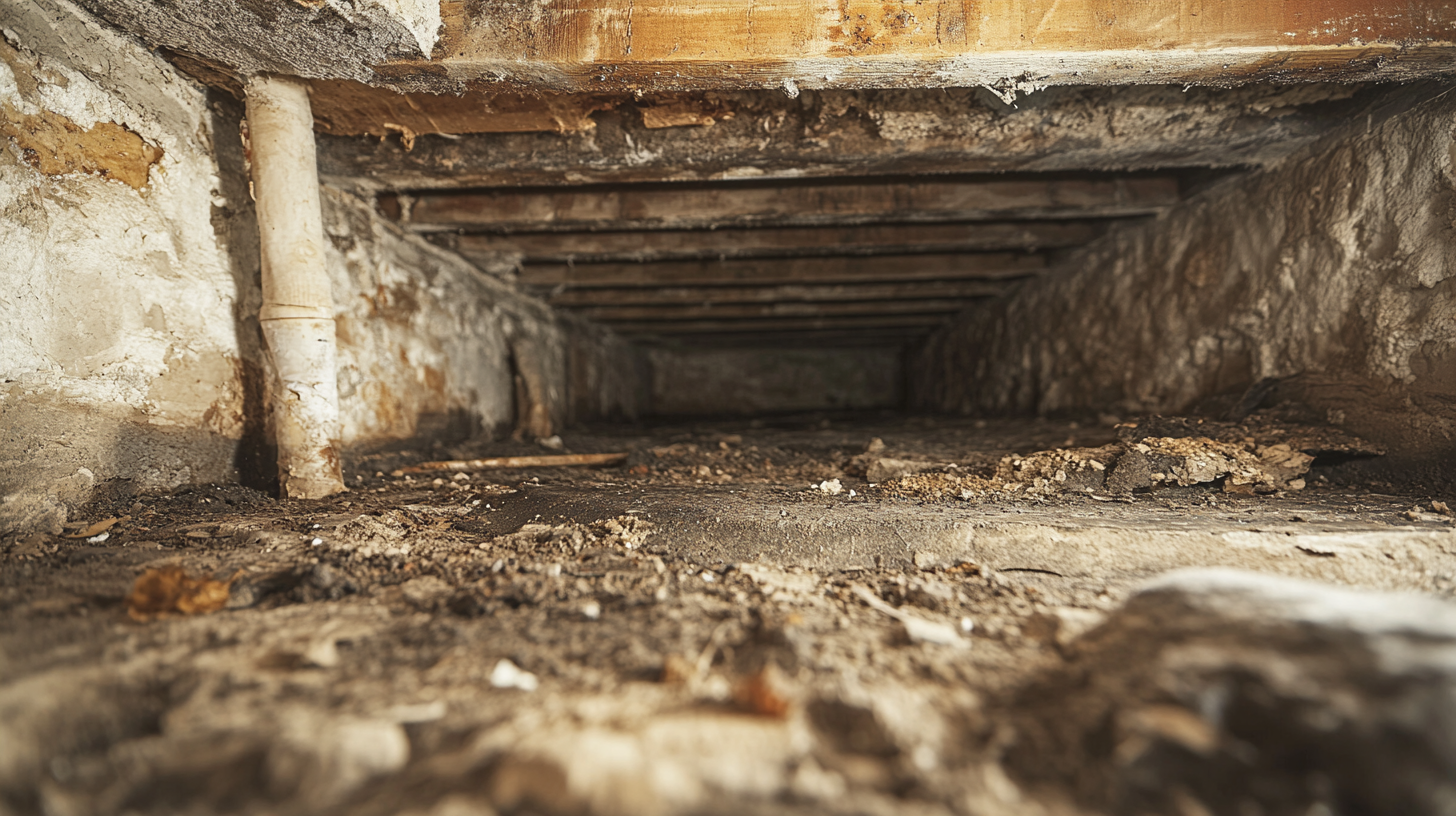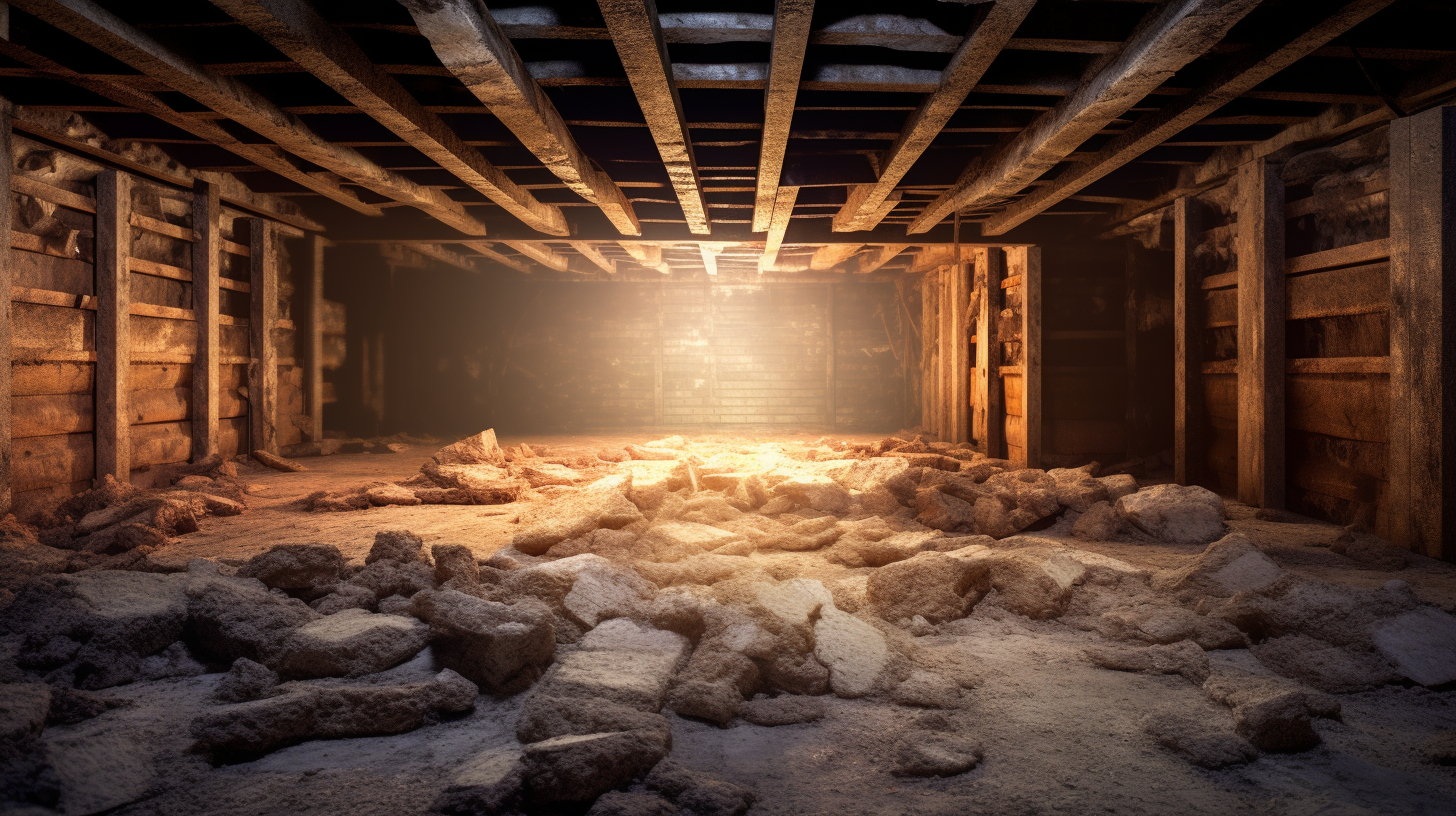In the heart of every home lies a network of hidden pathways and spaces, much like the veins and arteries within us, quietly supporting our daily lives. Among these, the crawl space often remains an unsung hero out of sight and, too often, out of mind. Yet, what if we told you that this overlooked space holds the key to not only enhancing your home’s comfort but also safeguarding your health and optimizing energy efficiency? The secret lies in integrating your crawl space ventilation with the home's Heating, Ventilation, and Air Conditioning (HVAC) system, a synergy that can transform the very way you experience home comfort.
This blog delves into the myriad benefits of such integration, revealing how it can create a healthier living environment, reduce energy costs, and extend the lifespan of your HVAC system. By fostering a dialogue between these seemingly disparate parts of your home, you can unlock a level of harmonious functionality that many homeowners only dream of. Join us as we explore the untapped potential that lies beneath your feet, and learn how to elevate your home's performance to its pinnacle.
Understanding the Link Between Crawl Space and Home Environment
The health of your home environment hinges significantly on areas often hidden from view. One such critical area is the crawl space a narrow, usually unfinished space located underneath your home's floor. It is easy to overlook this space, but its conditions play a pivotal role in the overall air quality and climate of your living environment.
Impact of Crawl Space Conditions on Indoor Air Quality
How Crawl Space Air Can Infiltrate Living Spaces
The air quality in your crawl space is more connected to your living space than you might think. Due to the stack effect, where warm air rises and creates a vacuum that pulls cooler air into a building from the lower levels, your home’s crawl space can significantly influence the air you breathe daily. Here’s how:
- Air Movement: As warm air rises and exits through the upper levels of the house, cooler, often moisture-laden air from the crawl space is drawn up into the main living areas. This air movement can transport various pollutants with it, including mold spores, radon, pest residues, and general mustiness.
- Moisture Control: The conditions in your crawl space, particularly moisture levels, critically impact your home’s overall humidity and propensity for mold growth. Excessive dampness in the crawl space can lead to increased humidity inside your home, which not only affects indoor air quality but can also contribute to health problems for the inhabitants.
- Insulation and Sealing: Properly insulating and sealing your crawl space prevents cold floors and reduces the chances of pipes freezing in winter while mitigating the upward movement of undesirable air. This insulation barrier helps maintain a clean, dry, and efficient air passage into the home's main living spaces.
By understanding and managing these dynamics, you can ensure that the air circulating within your home is fresh, clean, and healthy. Enhancing your crawl space conditions helps establish a more controlled and pleasant home environment.
The Role of HVAC in Home Climate Control
Overview of HVAC Functions and Its Importance in Maintaining a Comfortable Home Environment
Your HVAC system (Heating, Ventilation, and Air Conditioning) is the central nervous system of your home's climate control. It not only heats and cools your home but also plays a critical role in ventilation and maintaining indoor air quality. Here’s why your HVAC system is indispensable:
- Temperature Regulation: The HVAC system adjusts the indoor temperature to your preferences, ensuring comfort throughout the seasons. Whether it's the heat of summer or the cold of winter, the system works to moderate internal conditions.
- Humidity Control: Apart from temperature control, HVAC systems help regulate the level of humidity within your home. Proper humidity levels are essential not only for comfort but also to prevent mold growth and reduce allergen presence in the air.
- Air Filtration: HVAC systems are equipped with filters that trap dust, pollen, and other airborne particles. Regular replacement of these filters is crucial to maintain optimal air quality and prevent the circulation of contaminants.
- Ventilation: By circulating and exchanging indoor and outdoor air, the HVAC system ensures that your home does not become stagnant. It expels odors, pollutants, and excessive moisture, refreshing the indoor atmosphere.
Understanding the comprehensive roles and functions of your HVAC system highlights its importance in not just providing comfort, but also in ensuring a healthy living environment. By keeping your HVAC system in good working condition and regularly checking your crawl space for moisture and air quality issues, you can greatly enhance your home's environment and your quality of life.
Benefits of Integration
Integrating your crawl space ventilation with your home's HVAC system can transform the way you think about and experience the environment in your home. This section explores the dual benefits of enhanced air quality and comfort, alongside the potential for significant energy efficiency and cost savings, demonstrating the holistic advantages of this integration.
Enhanced Air Quality and Comfort
How Integration Improves Air Circulation and Reduces Humidity Levels
Integrating your crawl space ventilation with your HVAC system optimizes the air flow and quality throughout your home. This alignment not only improves comfort but also enhances the health conditions within your living spaces. Here’s how:
- Optimized Air Circulation: By creating a direct link between crawl space air handling and your main HVAC system, the air throughout your home becomes more dynamic and circulatory. This means consistent air temperatures and quality in every room, eliminating "dead zones" where air can stagnate.
- Reduced Humidity Levels: Crawl spaces are prone to high humidity levels due to their close proximity to the ground and limited natural airflow. This humidity can seep into your living spaces, making the air feel stuffy and facilitating mold growth. With integrated ventilation, your HVAC system can more effectively manage air moisture levels not just locally but across the entire house, maintaining a balanced and comfortable humidity level that enhances comfort and protects your health.
- Prevention of Contaminant Spread: Effective integration also means that potential contaminants like mold spores, radon, and other allergens are less likely to ascend from the crawl space into your living areas. The improved filtration and circulation provided by a well-integrated system ensure that the air you breathe is clean and healthy.
The result is a home environment that not only feels more comfortable but is inherently safer and healthier for everyone.
Energy Efficiency and Cost Savings
Potential for Reduced Energy Consumption and Lower Utility Bills
One of the most compelling reasons to integrate your crawl space ventilation with your HVAC system is the potential for energy savings. Here are key ways this integration can lead to more efficient energy use and cost reductions:
- Enhanced System Efficiency: When crawl space vents are integrated with the HVAC system, air handling becomes more efficient. Your HVAC doesn’t need to work as hard to heat or cool your home, which can significantly reduce your energy consumption.
- Lower Utility Bills: Efficient energy use translates directly into lower utility bills. By optimizing the air flow and temperature regulation within your home, the HVAC system uses less energy, which means you pay less in energy costs each month.
- Extended HVAC Lifespan: Operating under less strain and more optimal conditions, your HVAC system can last longer. This not only saves you money on energy bills but also reduces the frequency and costs associated with HVAC repairs and replacements.
- Sustainability: Reducing your energy consumption isn’t just good for your wallet—it’s also beneficial for the environment. Lower energy use means reduced greenhouse gas emissions, contributing to a healthier planet.
Through the integration of crawl space ventilation with your home's HVAC system, you not only enhance the livability and comfort of your environment but also embrace energy efficiency and sustainability. This proactive approach not only improves your immediate air quality and comfort but also promises long-term financial and environmental rewards.
Key Considerations for Integration
Integrating your crawl space ventilation with your HVAC system is a strategic move that can enhance home comfort and efficiency. However, achieving a seamless integration involves careful consideration of your current systems and understanding the specific requirements needed for successful implementation. This section will guide you through these essential considerations, ensuring that your integration process is both smooth and effective.
Assessing Your Current Systems
Evaluating the Compatibility of Your Crawl Space Ventilation and HVAC Systems
Before proceeding with integration, it's crucial to assess the compatibility of your existing crawl space ventilation and HVAC systems. This evaluation will determine how well these systems can work together and what modifications might be necessary. Here's how to conduct this assessment effectively:
- System Age and Condition: Check the age and operational condition of both your HVAC and crawl space ventilation systems. Older systems may need upgrades or replacements to ensure they can handle the integration and operate efficiently.
- Capacity and Design: Evaluate the capacity of your current HVAC system to see if it can efficiently circulate air through your crawl space without overworking. The design of your HVAC system also matters, as some systems are better suited for integration than others.
- Current Ventilation Setup: Examine the layout and effectiveness of your existing crawl space ventilation. Is it passive (vents only) or active (with fans)? The type of ventilation you currently have will impact the integration process and may require adjustments to optimize airflow.
- Inspect for Damages or Blockages: Ensure that there are no damages or blockages in either system that could hinder performance. Issues like mold growth, pest infestations, or debris in ductwork can significantly impact the effectiveness of the integration.
Taking the time to thoroughly assess these factors will help identify potential challenges and determine the best approach to integrate your systems successfully. It ensures that the integration not only is possible but also enhances system efficiency without incurring unnecessary costs or extensive modifications.
Understanding the Requirements
Technical and Structural Considerations for Successful Integration
Successful integration of crawl space ventilation with an HVAC system requires understanding several technical and structural considerations. These considerations ensure the system operates efficiently and safely post-integration. Key requirements include:
- Ductwork Adaptation: One of the first technical considerations is the adaptation of existing ductwork. This might involve extending your HVAC's ductwork into the crawl space or modifying the duct layout to improve airflow efficiency.
- Moisture Control Mechanisms: Since crawl spaces are prone to moisture accumulation, it's vital to integrate moisture control mechanisms. This could be in the form of dehumidifiers or improved drainage systems that work in tandem with your HVAC to maintain low humidity levels in the crawl space and throughout your home.
- Ventilation Strategy: Decide on a ventilation strategy whether maintaining a closed crawl space system with controlled ventilation or an open system that allows for natural air flow. Each strategy has different requirements and impacts on your HVAC system’s workload and efficiency.
- Energy Efficiency Considerations: Ensure that the integration adheres to energy efficiency standards. This includes using insulation, sealing leaks, and choosing energy-efficient components to minimize energy loss and reduce operating costs.
- Compliance with Local Codes and Regulations: Finally, it's critical to ensure that all modifications and installations comply with local building codes and regulations. This compliance is not only important for safety and environmental reasons but also affects the legality and insurance coverage of your home improvements.
Understanding these requirements is crucial for a successful integration of your crawl space ventilation with your HVAC system. It ensures that the project enhances indoor air quality and comfort efficiently and sustainably while avoiding common pitfalls that could lead to costly repairs or inefficient operation.
Integration Options and Technologies
Integrating your crawl space ventilation with your HVAC system offers several methods and technologies that can significantly improve the air quality and energy efficiency of your home. This part of the blog explores different integration methods and discusses the role of smart controls and automation in achieving optimal climate control.
Ventilation with HVAC Integration
Different Methods of Connecting Crawl Space Ventilation with HVAC Systems
Integrating your crawl space ventilation with your HVAC system can be accomplished in several ways, each with its own set of benefits and considerations. Understanding these options will help you choose the best method for your home’s specific needs. Here are the most common integration methods:
- Direct Ducting: This method involves extending the HVAC ductwork directly into the crawl space. This direct connection allows for controlled air flow from the HVAC system into the crawl space, improving air circulation and preventing moisture and pollutant accumulation.
- Indirect Ventilation: Utilizing existing vents, this method connects the crawl space ventilation indirectly with the HVAC system through passive vents or ducts that help circulate air without a direct link. This can be a more cost-effective option that still offers some of the benefits of integration without extensive modifications.
- Exhaust Fan Setup: Installing exhaust fans in the crawl space that are controlled by the HVAC system can help draw out moist and polluted air effectively. This setup is particularly useful in humid climates where moisture control is a priority.
- Balanced Ventilation Systems: These systems use both supply and exhaust ventilation to maintain balanced air pressure within the crawl space and throughout the home. They are integrated with the HVAC system to coordinate the air intake and exhaust, optimizing the indoor climate.
Each of these methods has its own set of advantages and installation considerations, from cost to energy efficiency to the suitability for your specific climatic conditions. Choosing the right integration method depends on your home’s layout, the existing HVAC setup, and your overall climate control needs.
Smart Controls and Automation
The Use of Smart Thermostats and Sensors for Optimal Climate Control
With advancements in home automation technology, smart controls are becoming an essential part of integrating HVAC systems with crawl space ventilation. These technologies not only simplify the management of your home’s climate but also enhance energy efficiency and comfort. Key components include:
- Smart Thermostats: These devices allow for automated temperature control throughout your home and can be programmed to include conditions in the crawl space. They adjust the HVAC operation based on real-time data from temperature and humidity sensors, ensuring optimal climate control while maximizing energy efficiency.
- Humidity Sensors: Installing humidity sensors in your crawl space and connecting them to your HVAC system via a smart thermostat can help maintain ideal moisture levels. These sensors provide real-time feedback to the HVAC system, which adjusts its settings to prevent moisture build-up and mitigate mold growth.
- Automated Vents: Smart vents open or close based on the air quality and temperature needs of different areas in your home, including the crawl space. By integrating these with your HVAC system, you can ensure more precise control over air distribution and quality.
- Remote Monitoring and Control: Many smart systems offer remote monitoring and control capabilities, which allow homeowners to manage their HVAC and crawl space ventilation settings from a smartphone or computer. This feature is particularly useful for making adjustments when away from home or for monitoring conditions over time.
Utilizing these smart controls and automation technologies can significantly enhance the integration of crawl space ventilation with your HVAC system. They not only improve comfort and air quality but also offer a hands-off approach to maintaining an optimal home environment.
Step-by-Step Guide to Integration
Integrating your crawl space ventilation with your HVAC system is a substantial undertaking that can significantly enhance the comfort and air quality of your home while improving energy efficiency. This guide will walk you through the key phases of planning and executing this integration, with a focus on ensuring that the process is smooth and effective.
Planning and Design
Key Steps in Planning the Integration Process
A well-thought-out plan is essential for successful integration of crawl space ventilation with your HVAC system. This planning and design phase lays the foundation for the work that will follow, helping to ensure that the integration meets your home’s specific needs and is executed efficiently. Here are the essential steps:
- Assessment of Current Systems: Evaluate your existing HVAC and crawl space ventilation systems to understand their condition, capacity, and compatibility with new integration solutions. This might involve consulting with a professional to conduct inspections and performance evaluations.
- Define Objectives: Clearly define what you aim to achieve with the integration. Common goals include improving air quality, enhancing moisture control, and increasing energy efficiency. Your objectives will guide the design and technology choices.
- Design the Integrated System: Depending on the assessment results and your objectives, design a system that aligns with your needs. This might include choosing between direct ducting and indirect ventilation methods, deciding on the type of smart controls to install, and determining any additional components like dehumidifiers or exhaust fans.
- Select Appropriate Technologies: Choose the technologies that will best meet the needs of your designed system. Consider factors such as the compatibility of new tech with existing systems, ease of installation, maintenance requirements, and budget.
- Create a Detailed Plan: Develop a detailed integration plan including timelines, budgets, and specifications. This plan should outline every step of the installation process, parts needed, and labor involved. It’s advisable to consult with or hire a professional installer during this phase to verify the plan’s feasibility and accuracy.
- Prepare for Installation: Coordinate with professionals for the installation process. Ensure that all necessary materials are purchased and all pre-installation requirements are met to avoid delays and complications.
Professional Installation
The Importance of Professional Installation and What to Expect
Professional installation is critical for integrating crawl space ventilation with your HVAC system, especially given the complexity and technical precision required. Here’s why professional installation is paramount and what you should expect during the process:
- Expertise and Experience: Professional installers bring the necessary expertise and experience to handle the installation efficiently and correctly. They can manage any unforeseen issues that often arise with complex systems like HVAC integrations.
- Compliance with Standards: Professionals will ensure that the installation complies with all local building codes, standards, and regulations. This compliance is crucial for both safety and functionality, as well as for maintaining valid home insurance coverage.
- What to Expect:
- Initial Consultation: This typically involves discussing your needs, reviewing the design plan, and scheduling the installation.
- Pre-Installation Checks: Before installation begins, the professional will conduct final checks to ensure everything is aligned with the project plan.
- Installation Process: The actual installation can take anywhere from a few hours to a couple of days, depending on the system’s complexity and the work needed.
- Testing and Calibration: After installation, the installer will test the integrated system to ensure it functions correctly and calibrate it for optimal performance.
- Final Review and Handover: The installer will walk you through the new system, discussing maintenance tips and answering any questions you may have.
- Follow-Up Support: Many professionals offer follow-up support post-installation, providing services for maintenance and troubleshooting. This support can be invaluable as it ensures your integrated system continues to function effectively over time.
Choosing the right professional and understanding the installation process are key to a successful integration that meets your home’s specific needs and delivers the intended benefits efficiently and sustainably.
FAQs
Contact Trench Guys Today!
Trench Guys will do everything we can to ensure your experience with us is excellent.
Request A FREE Estimate
Request a Free Estimate Form
Checkout Recent Post




Got a Question? We’re Here to Help.
You can arrange an appointment or make an enquiry by phone or email, orget in touch to us via our contact form.



